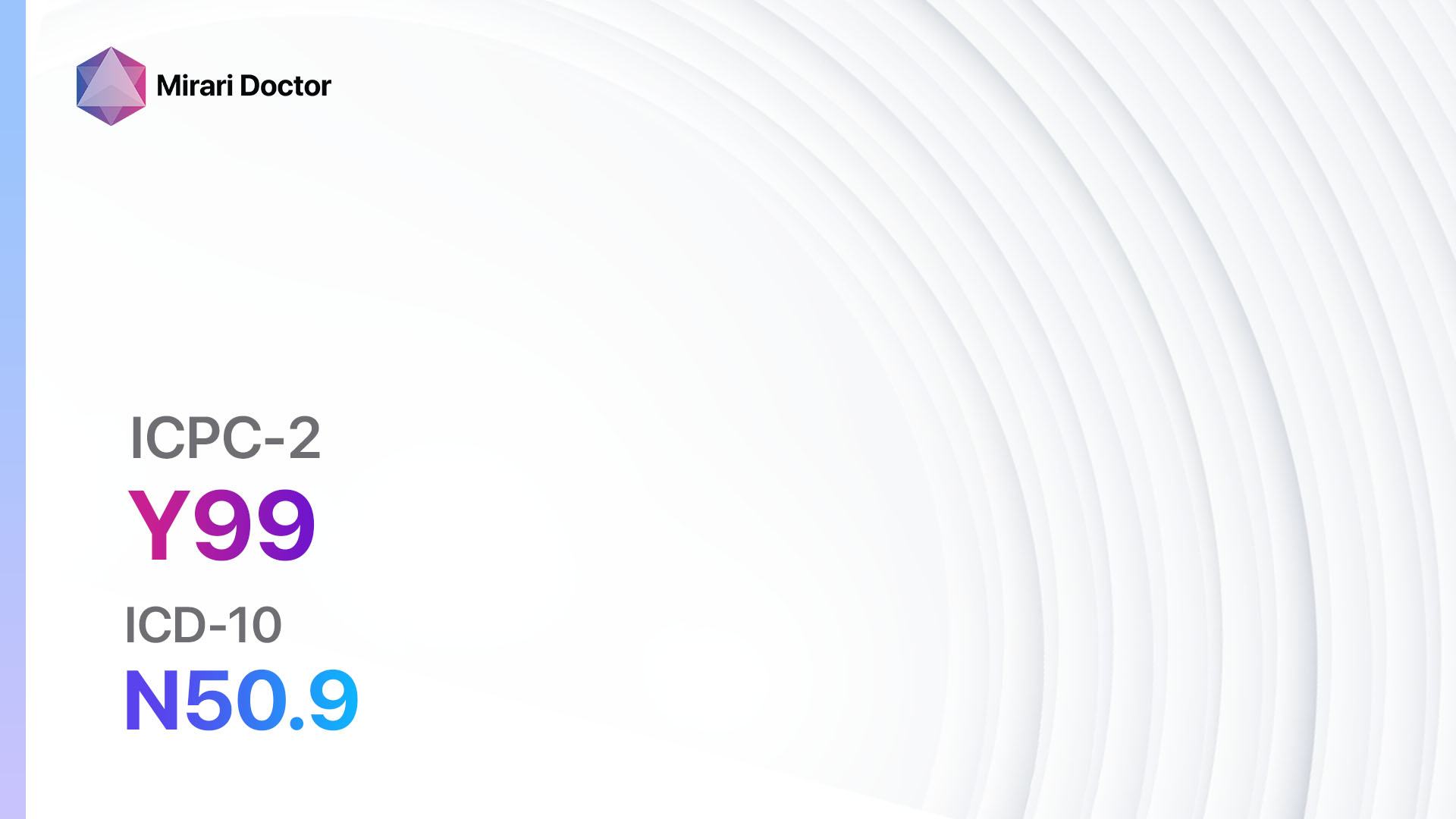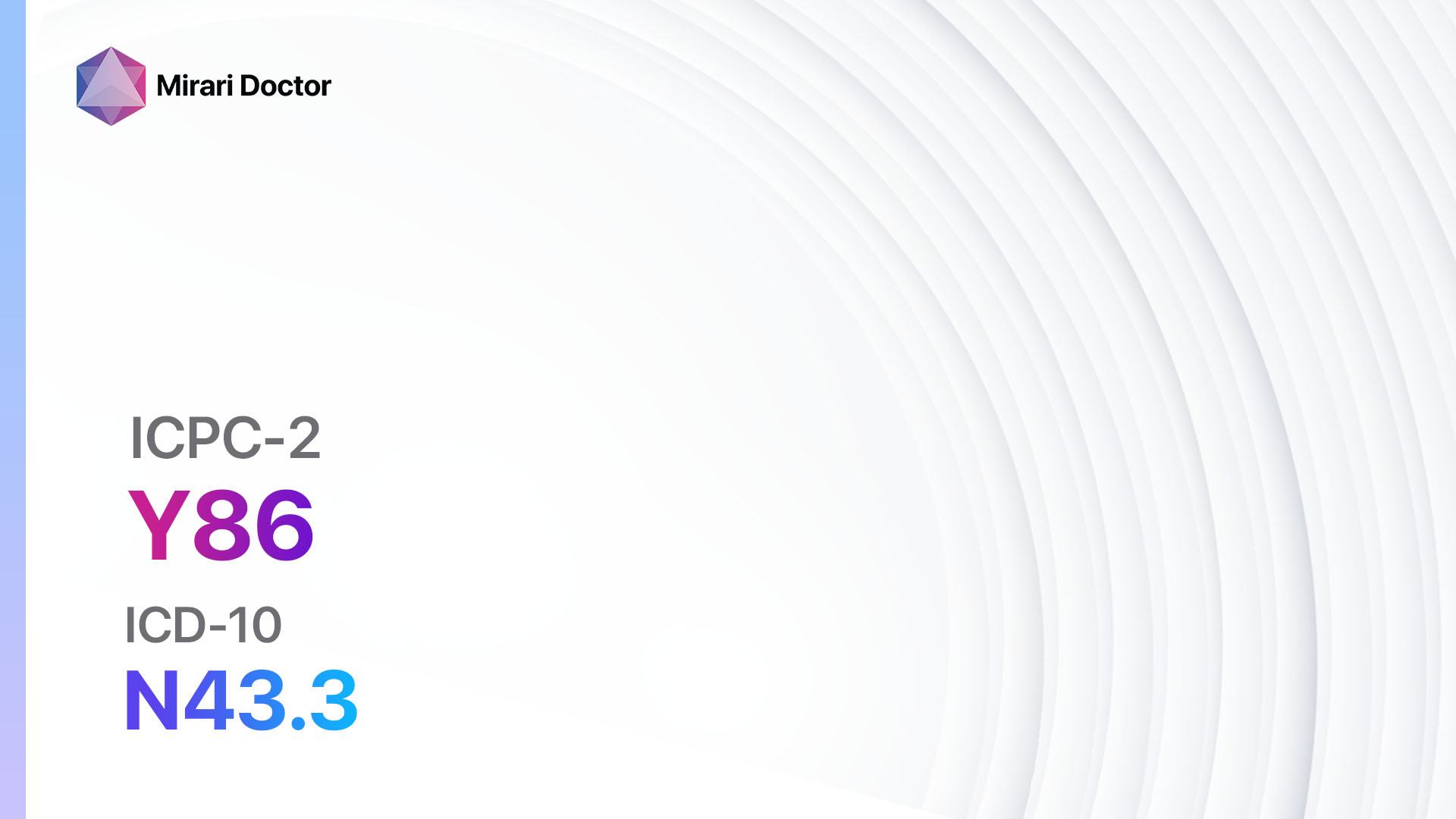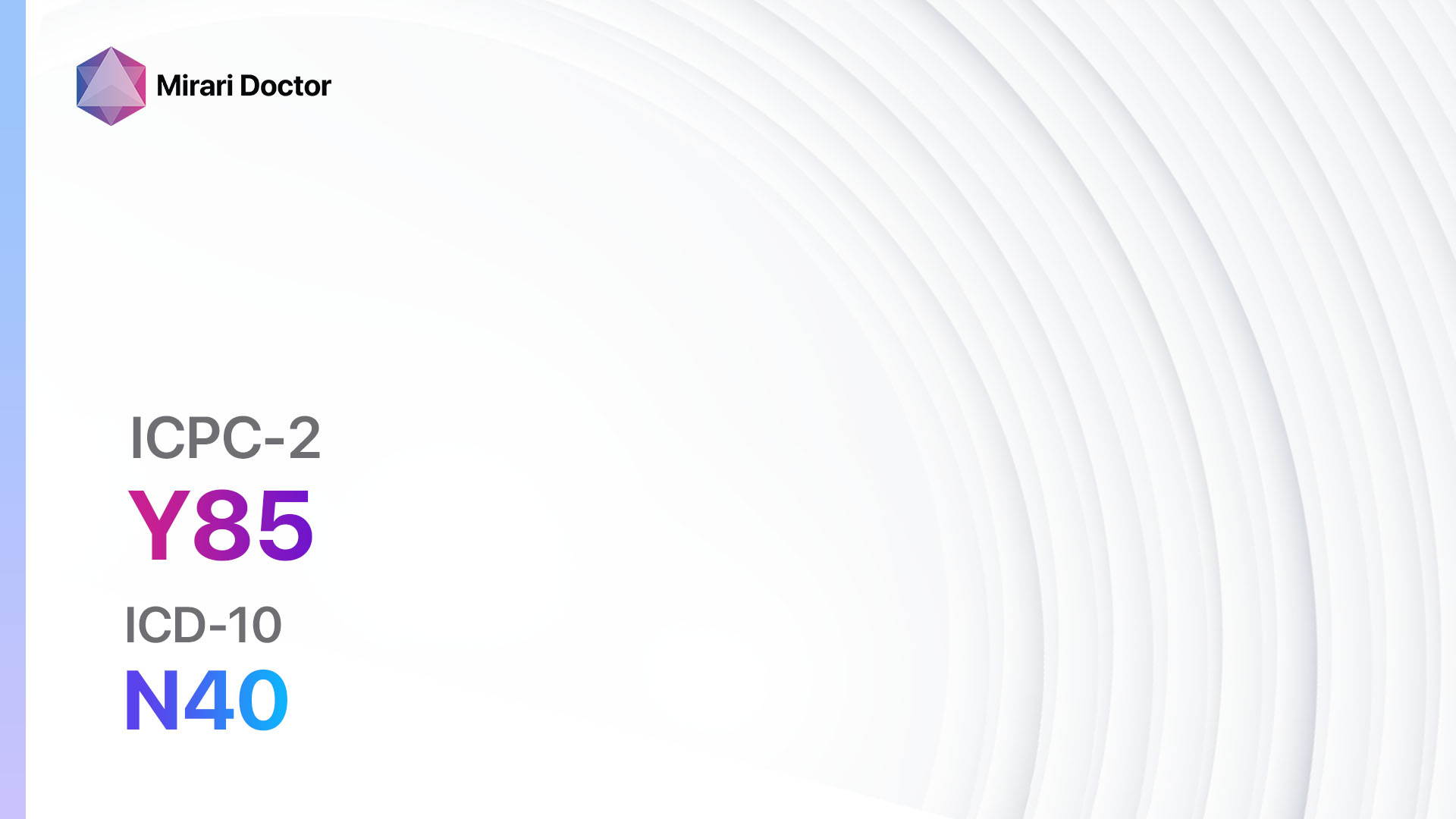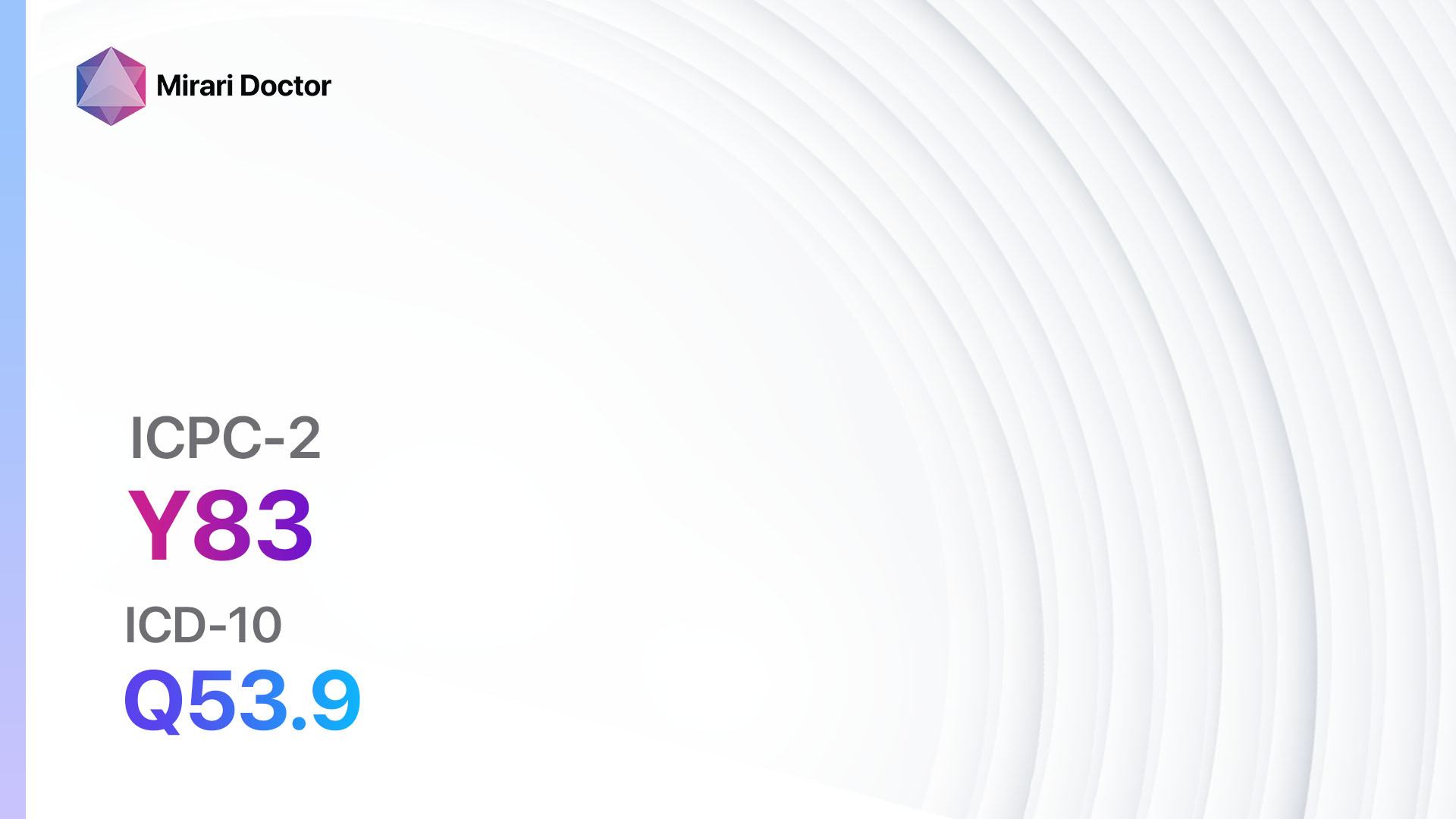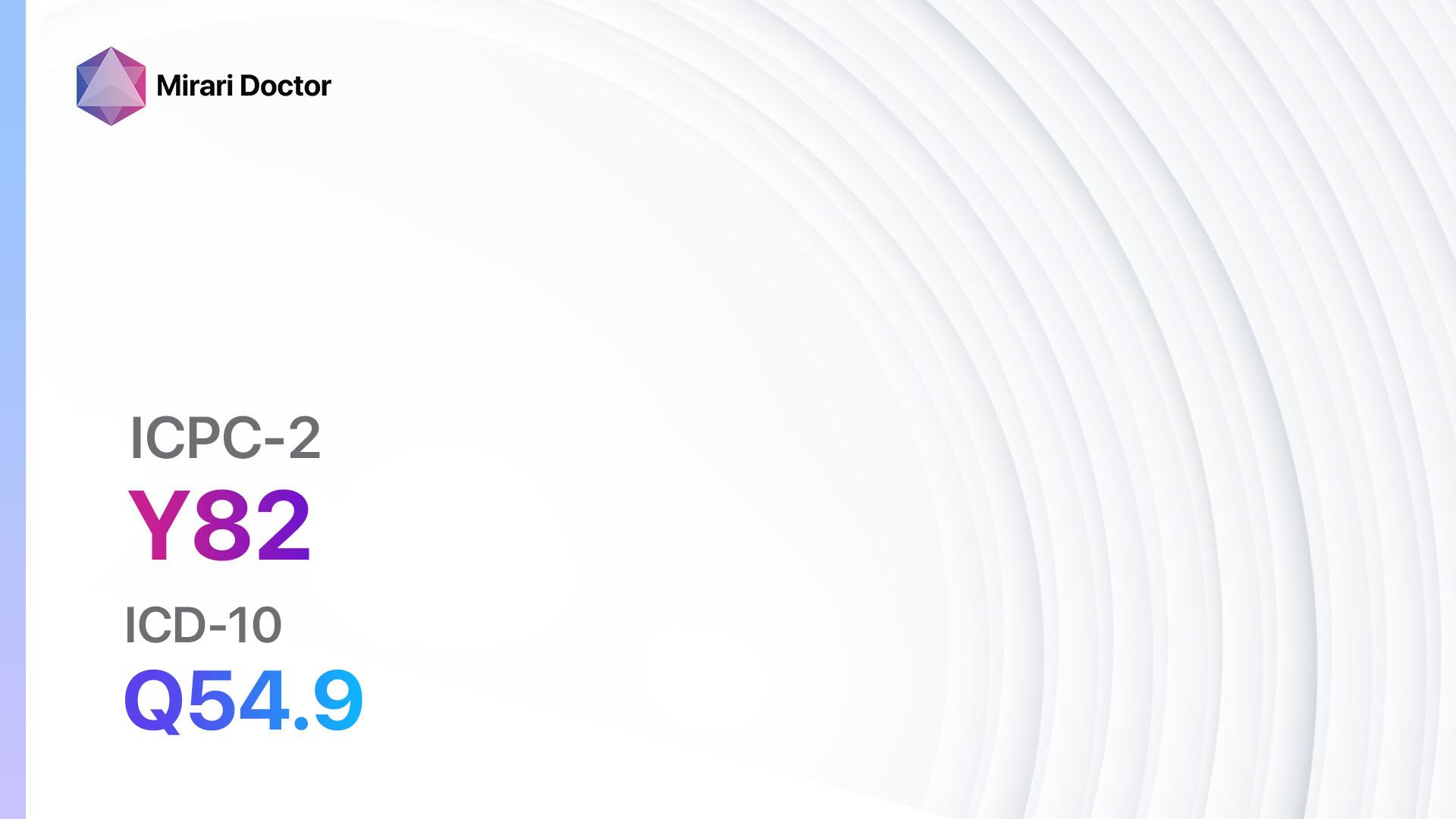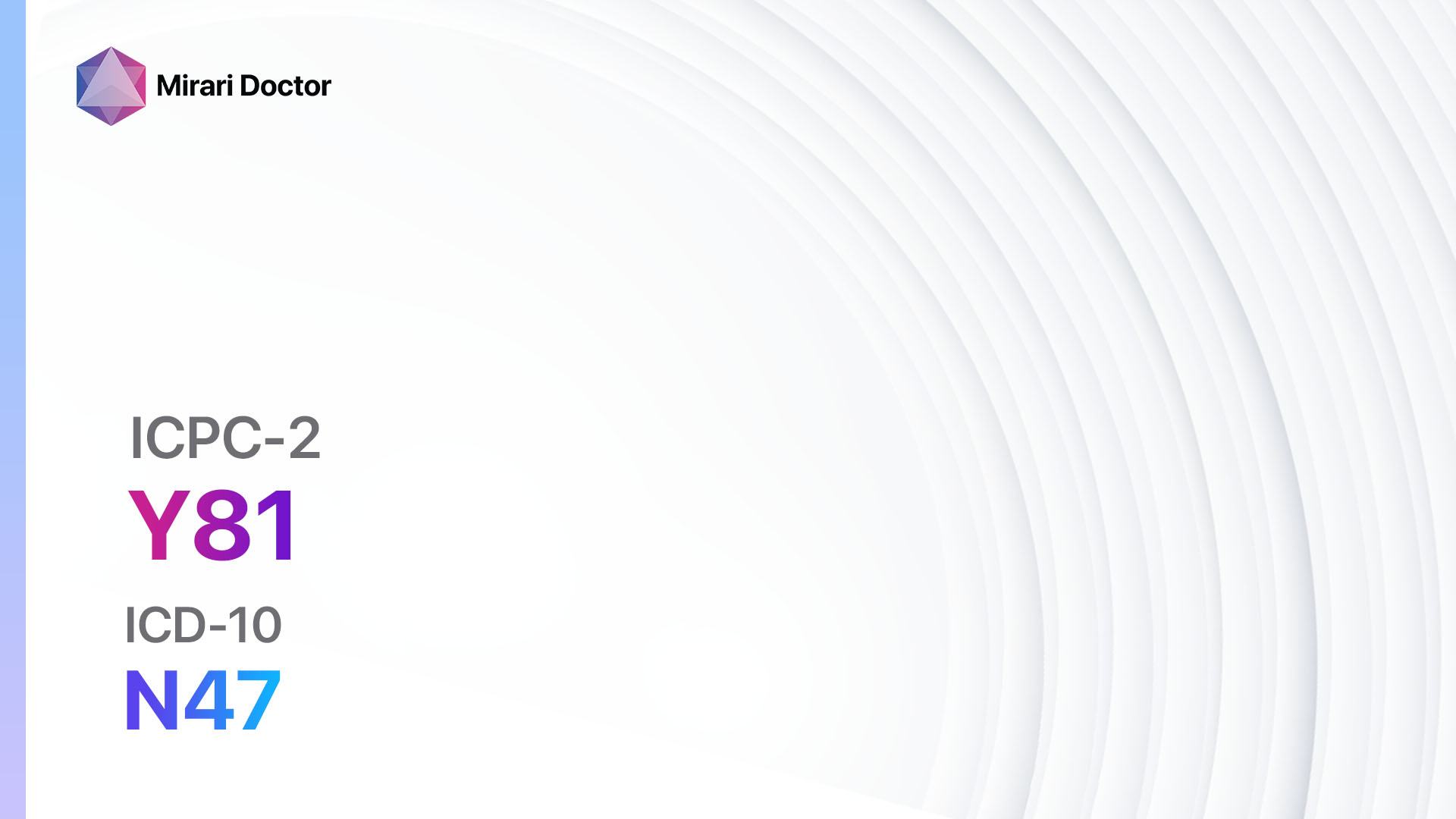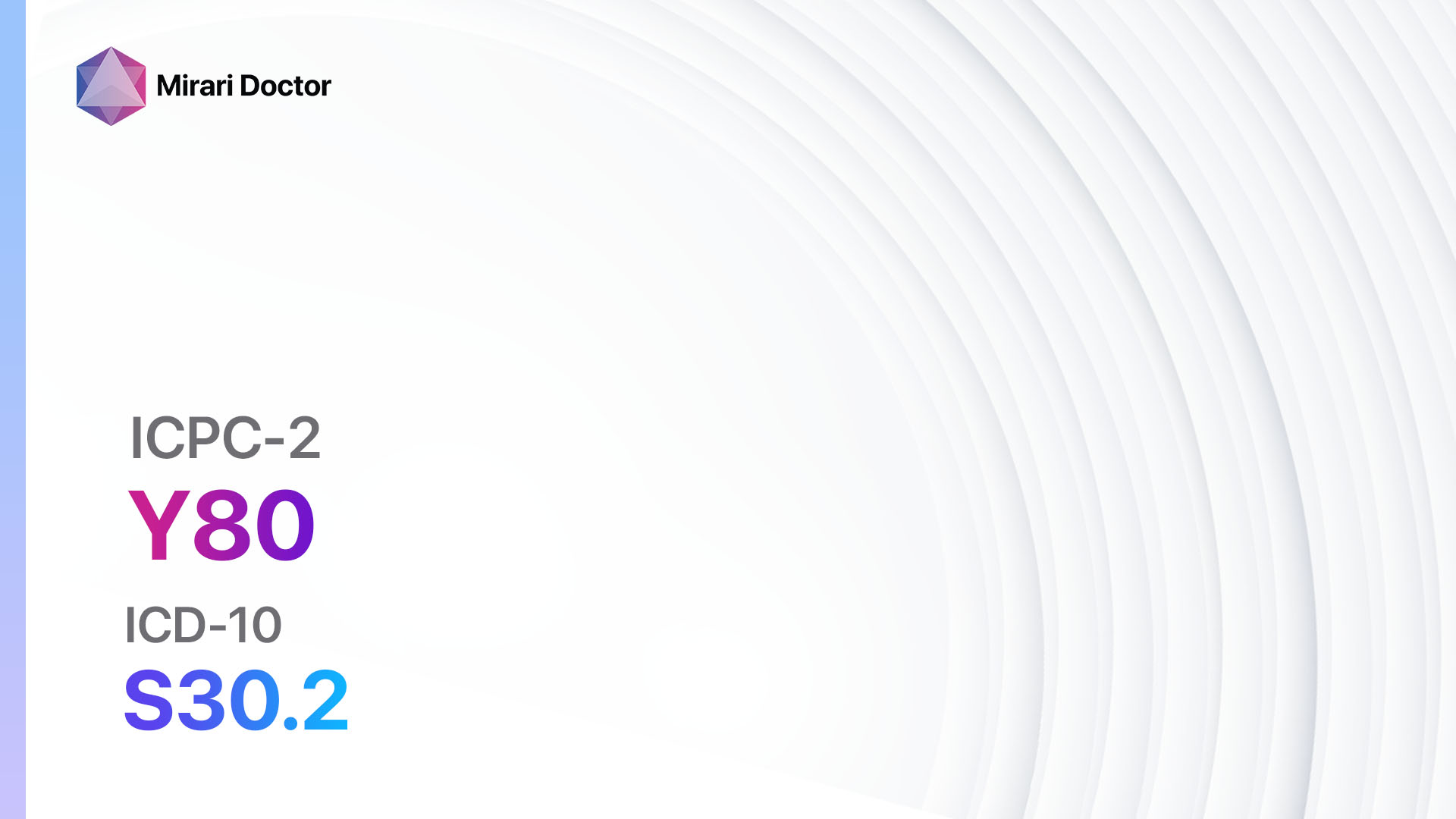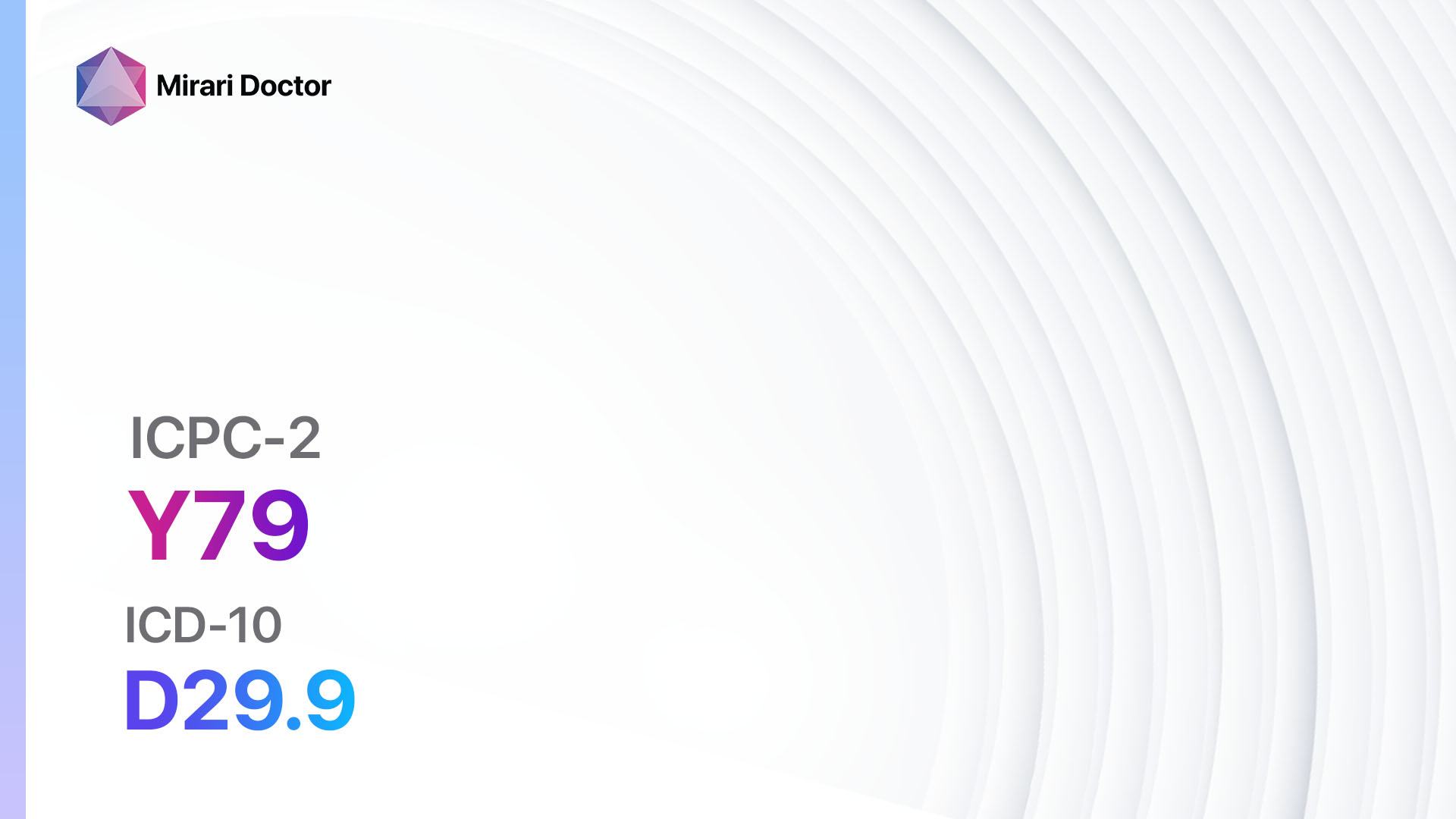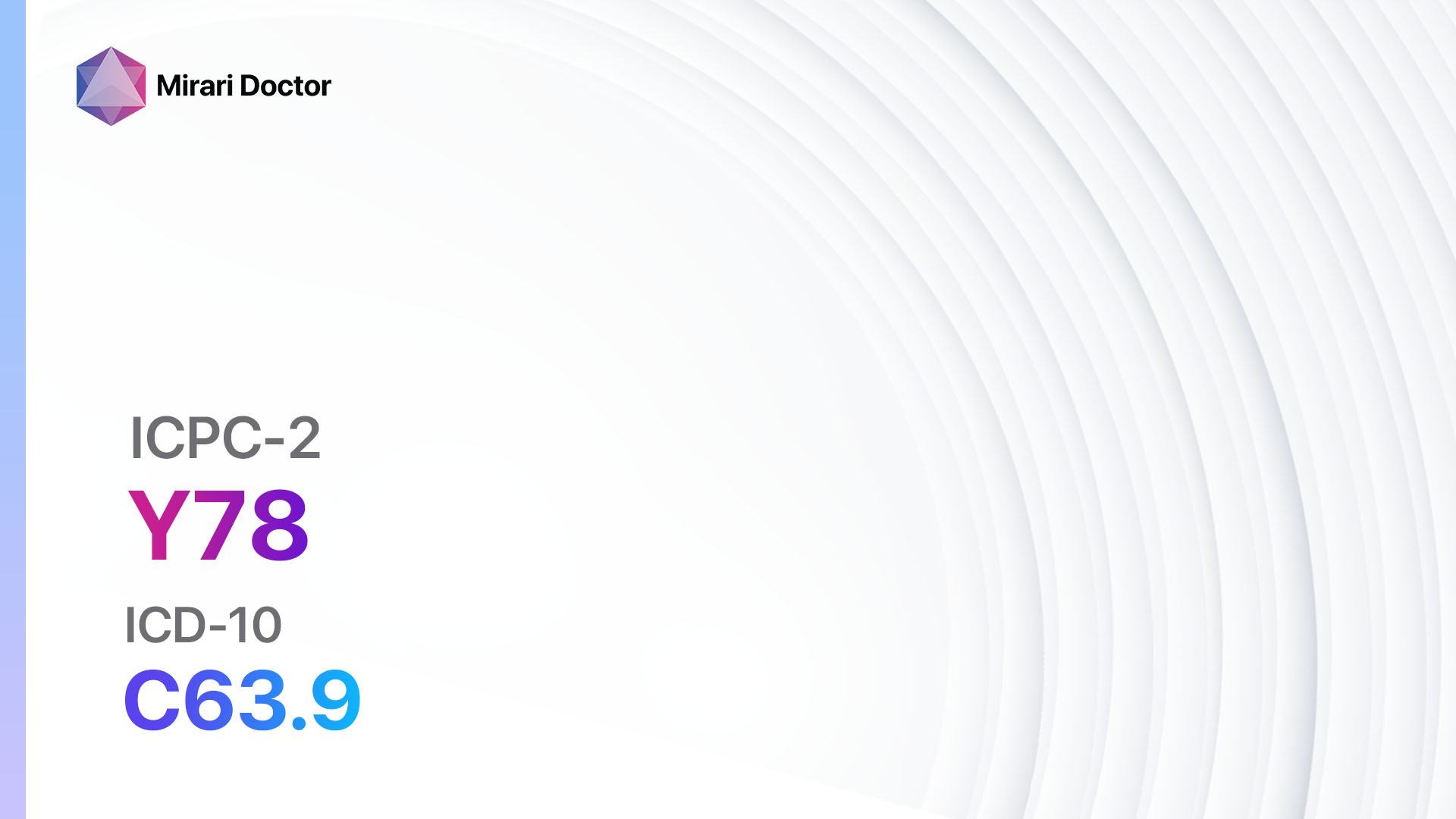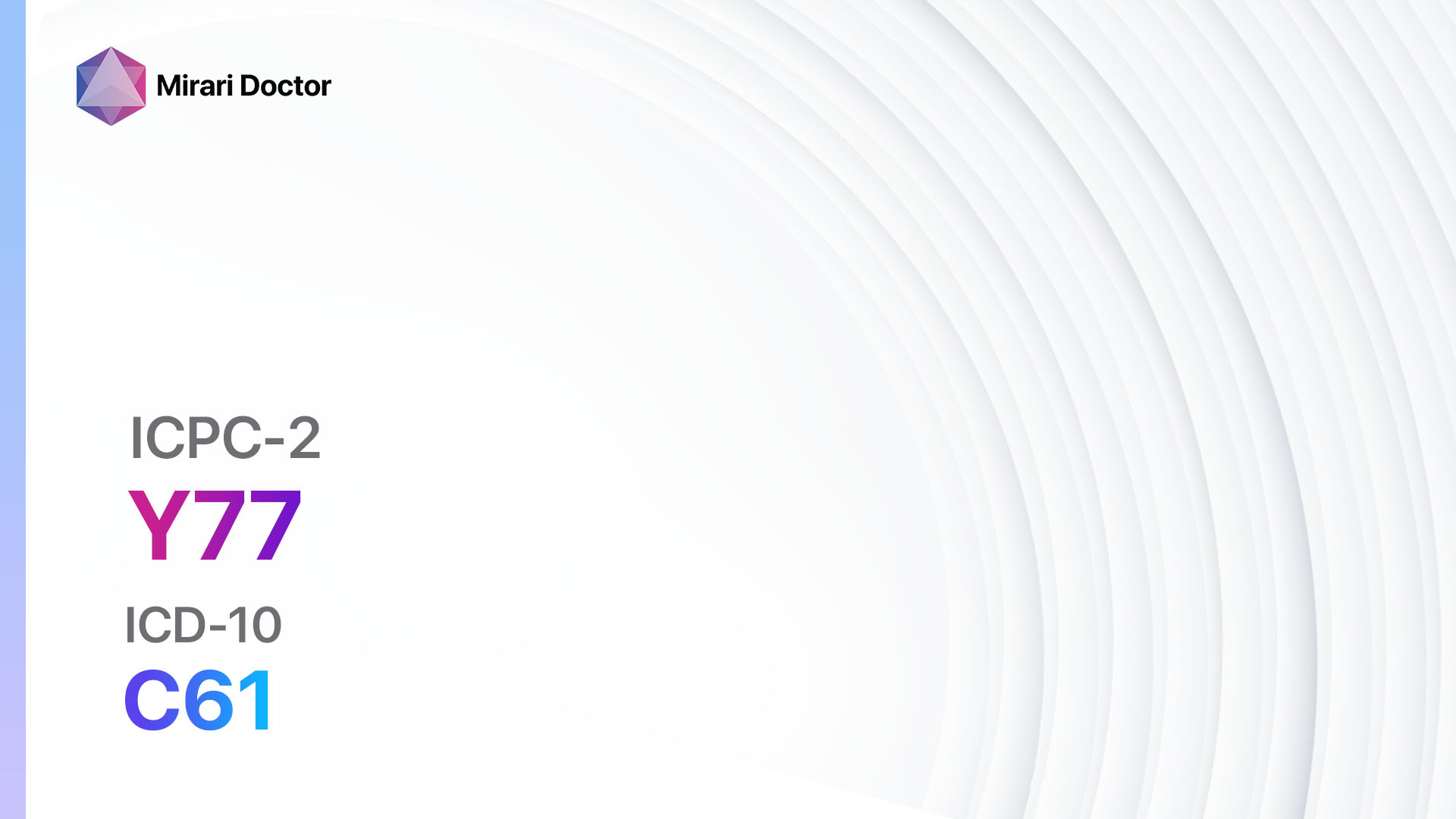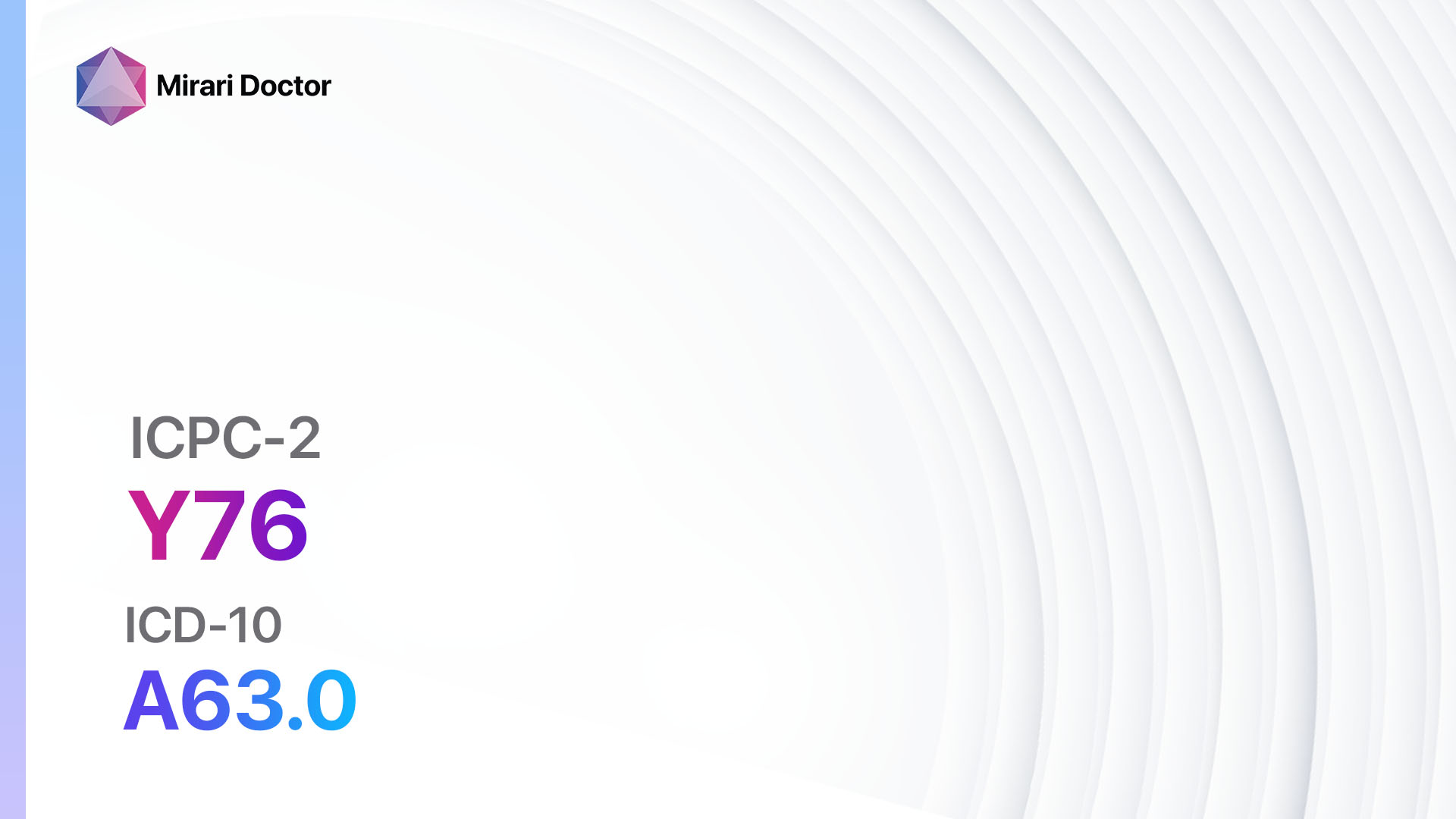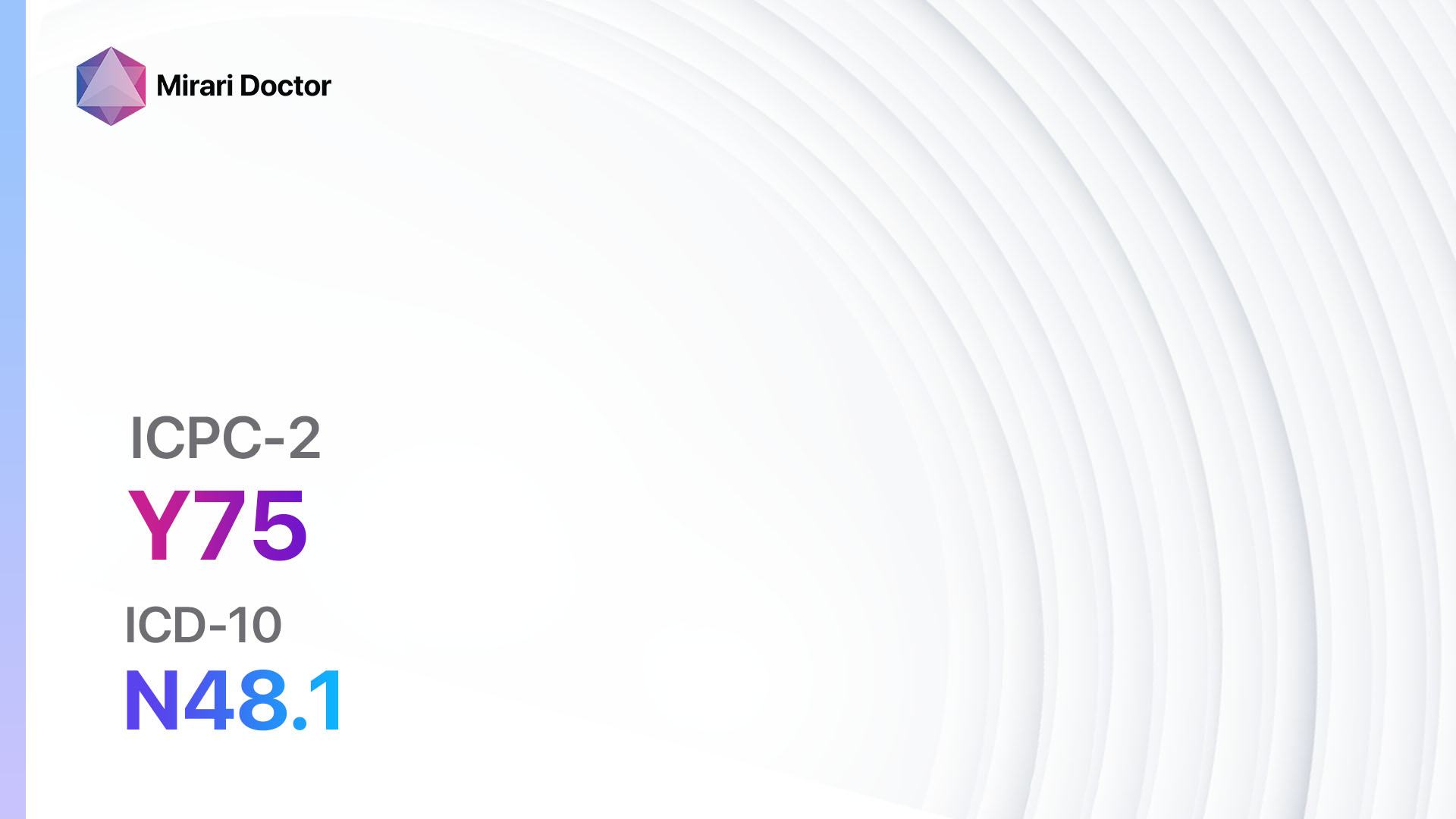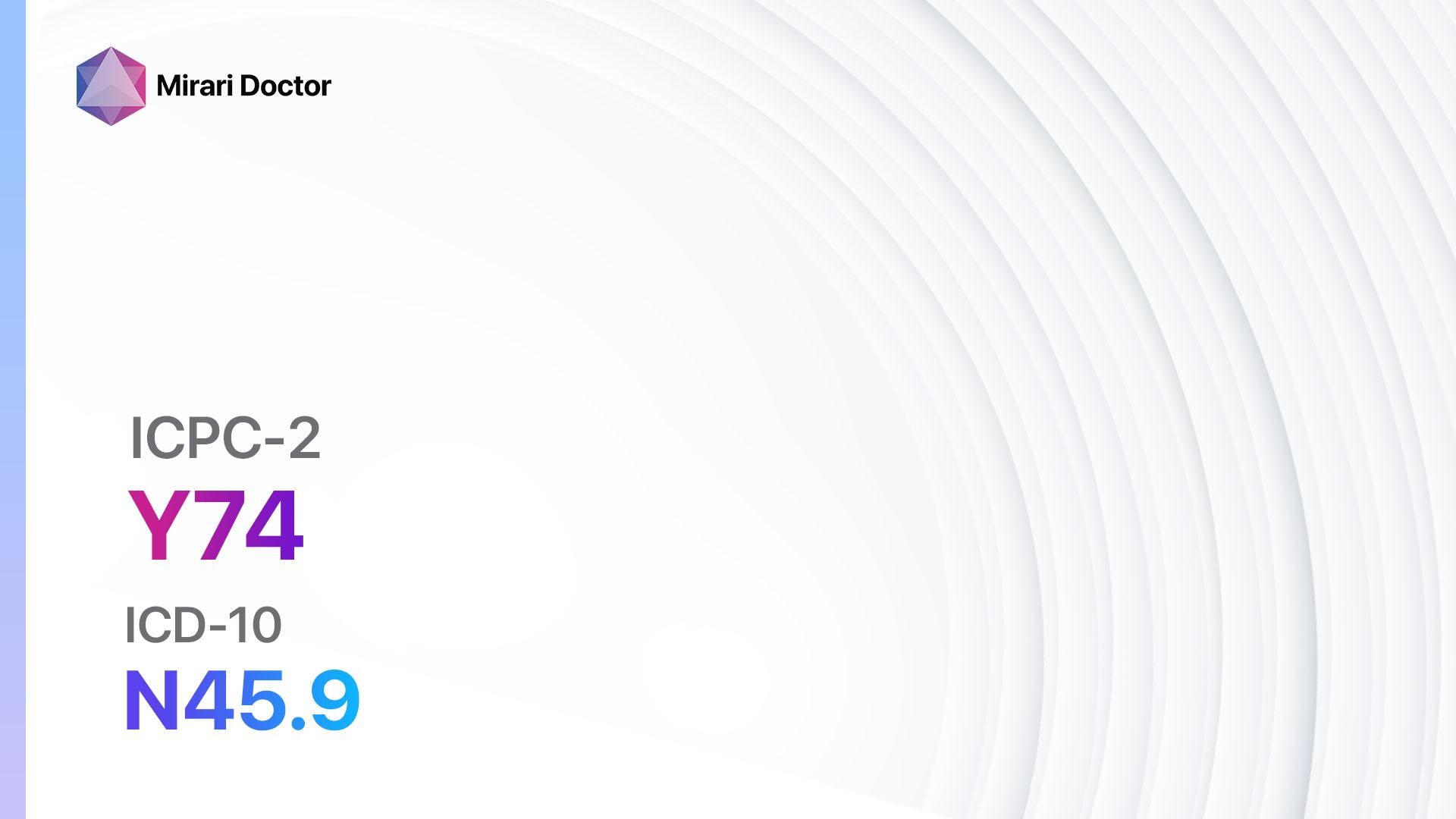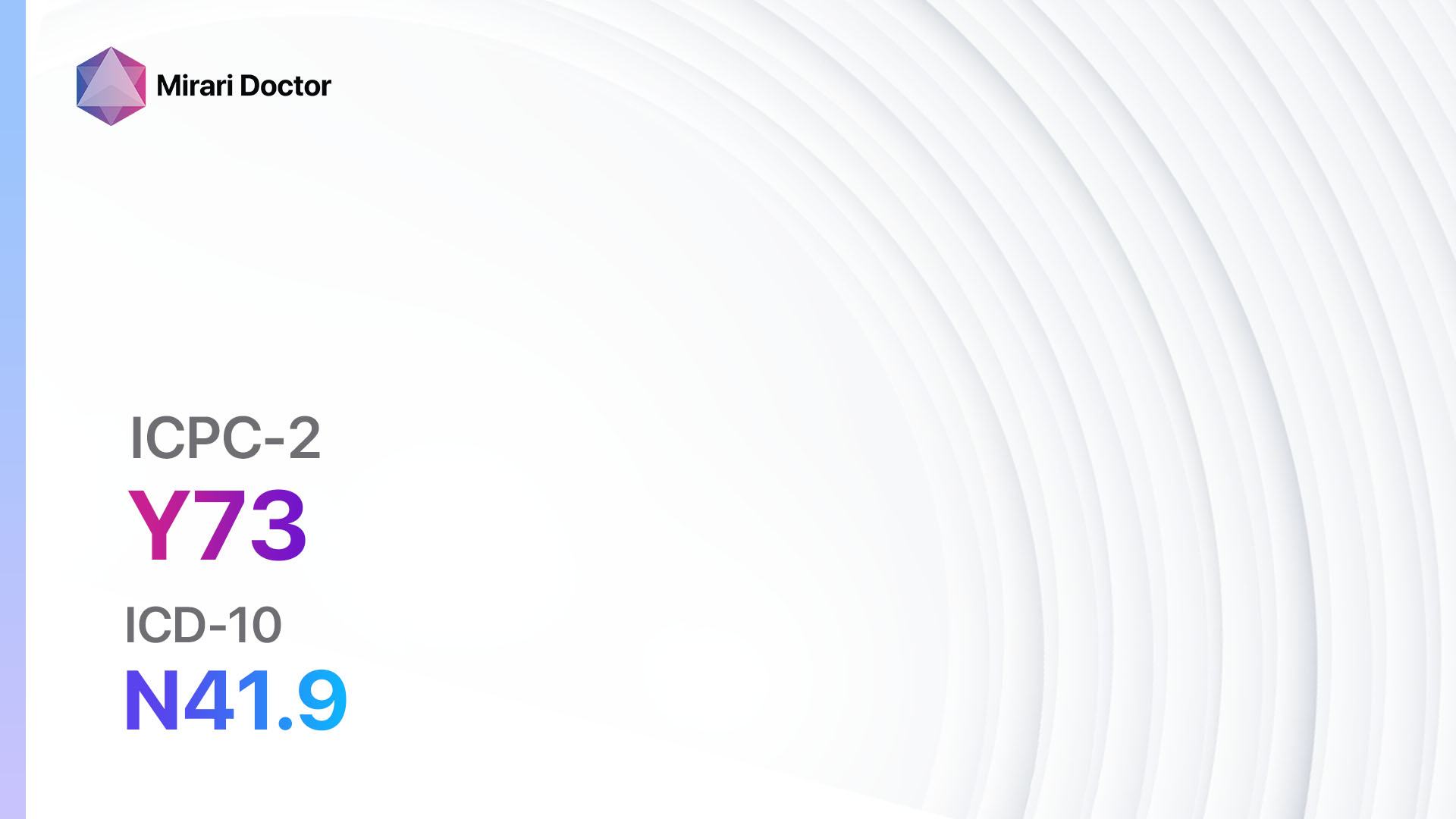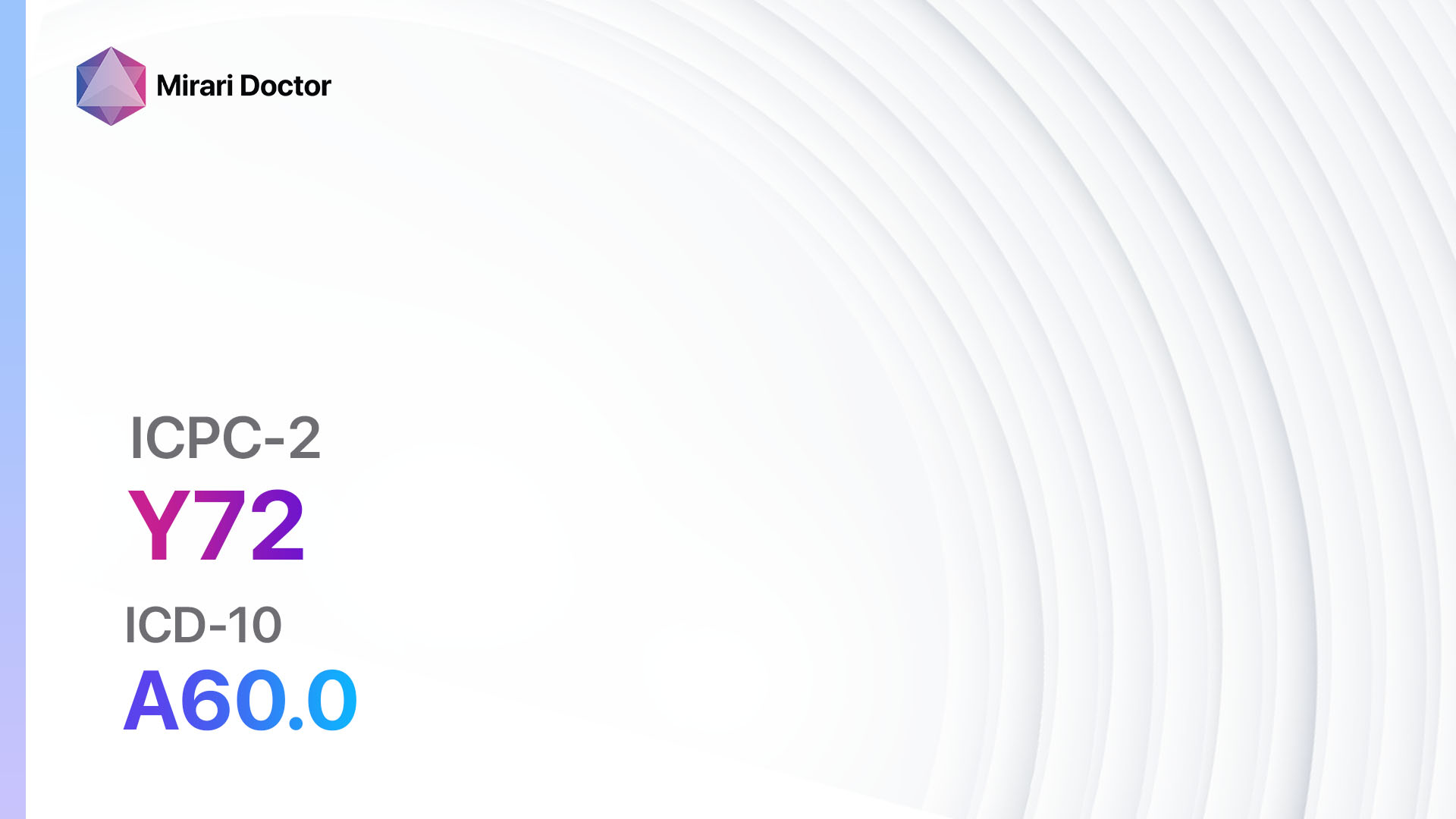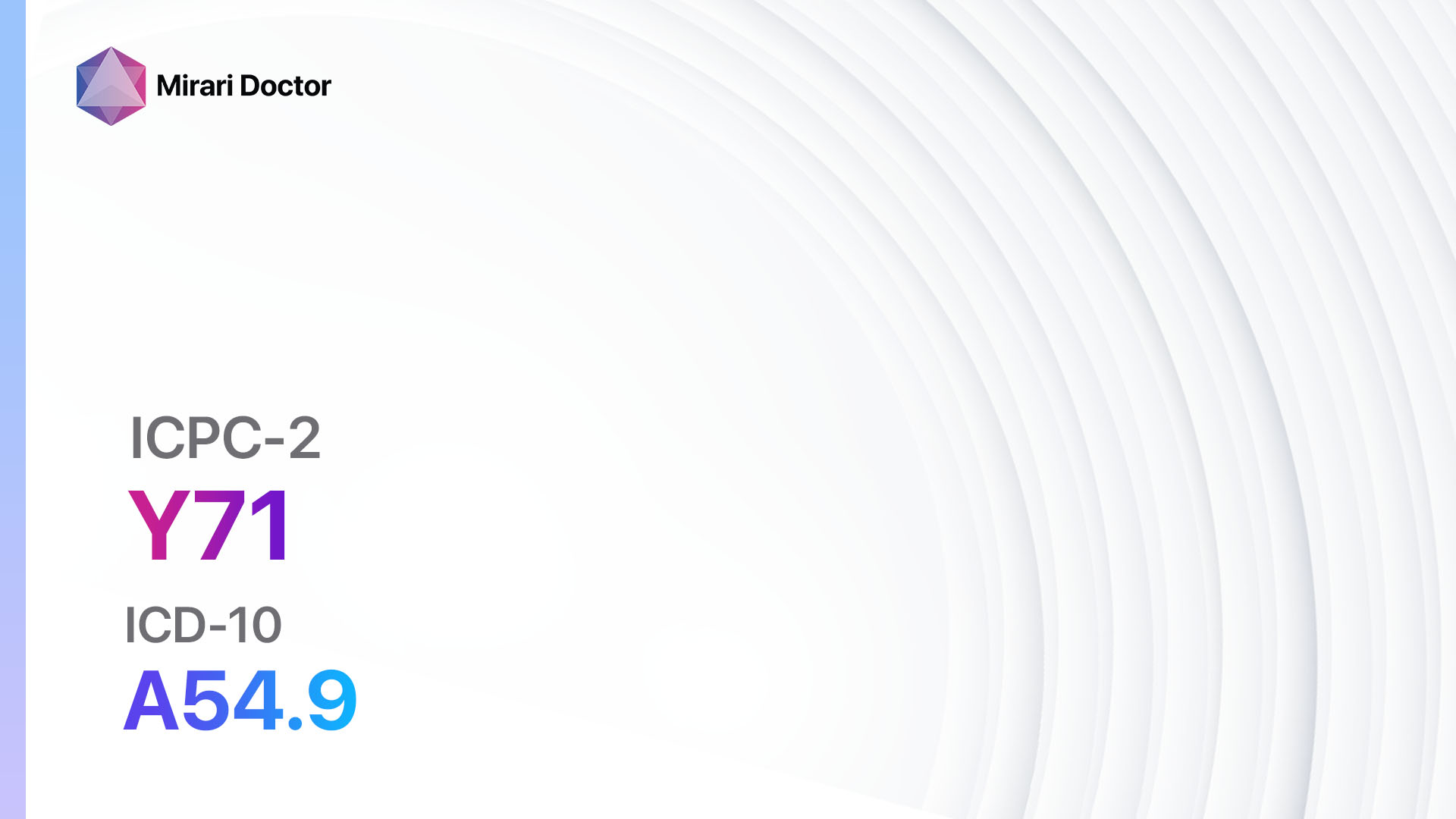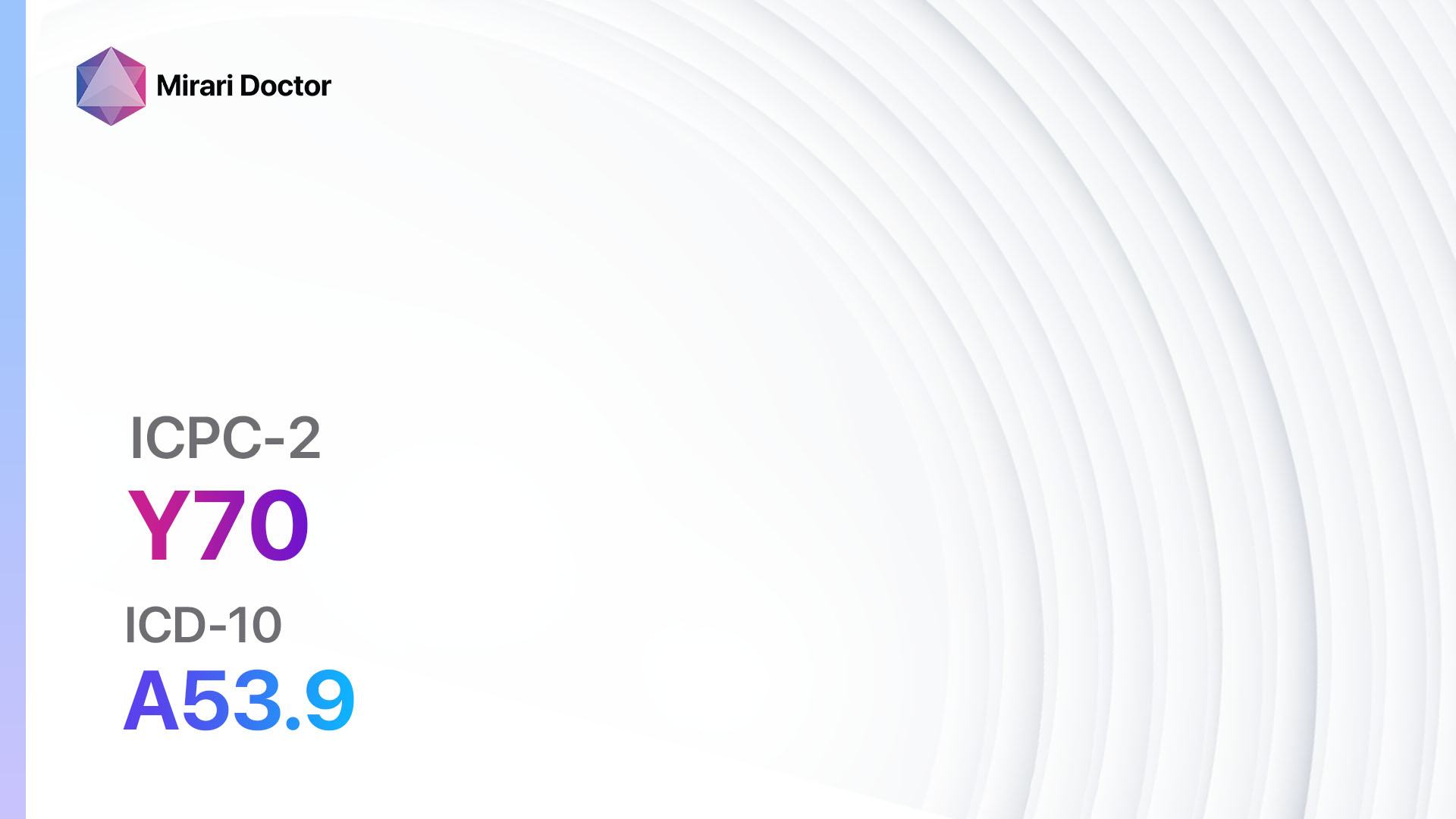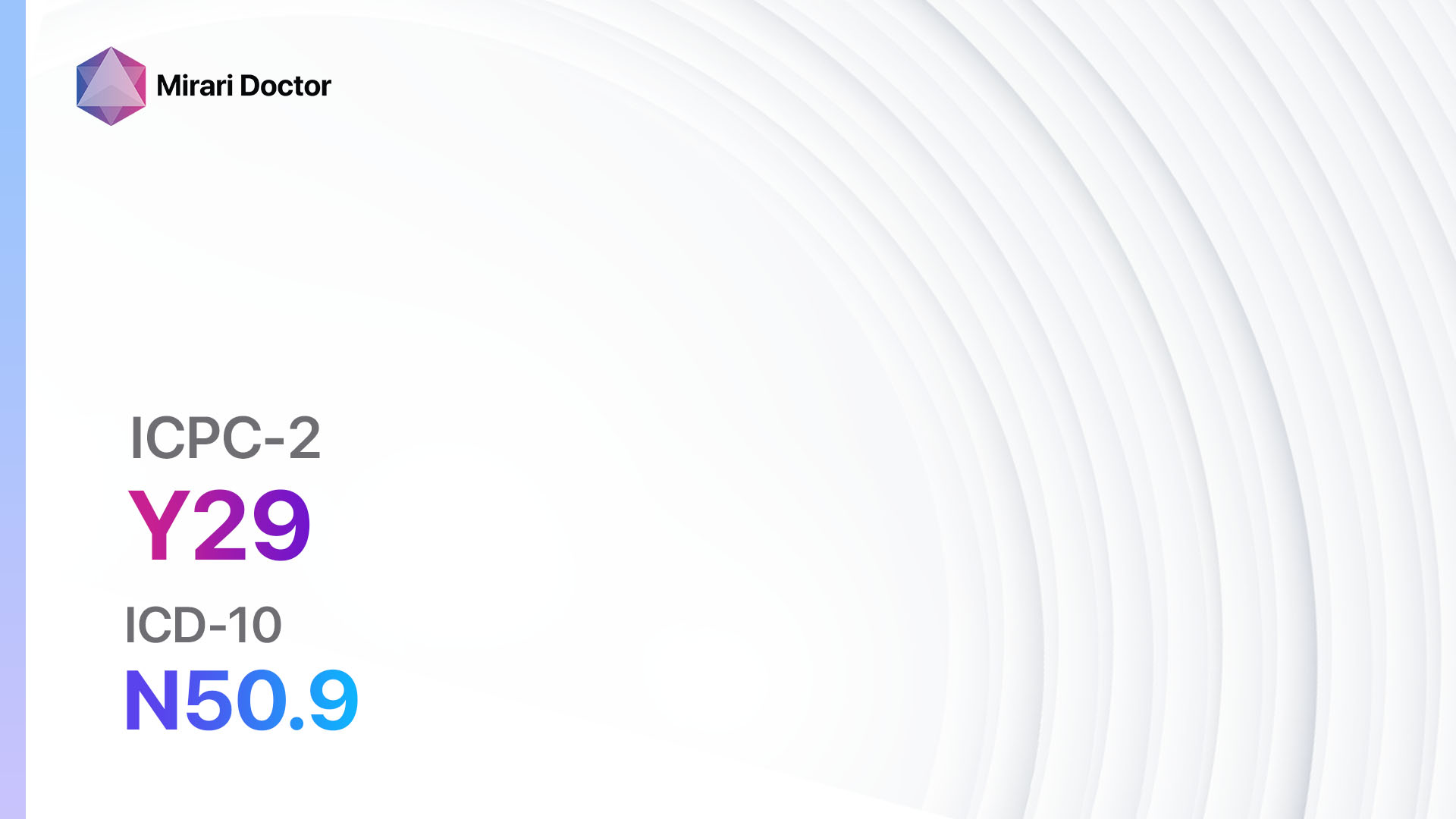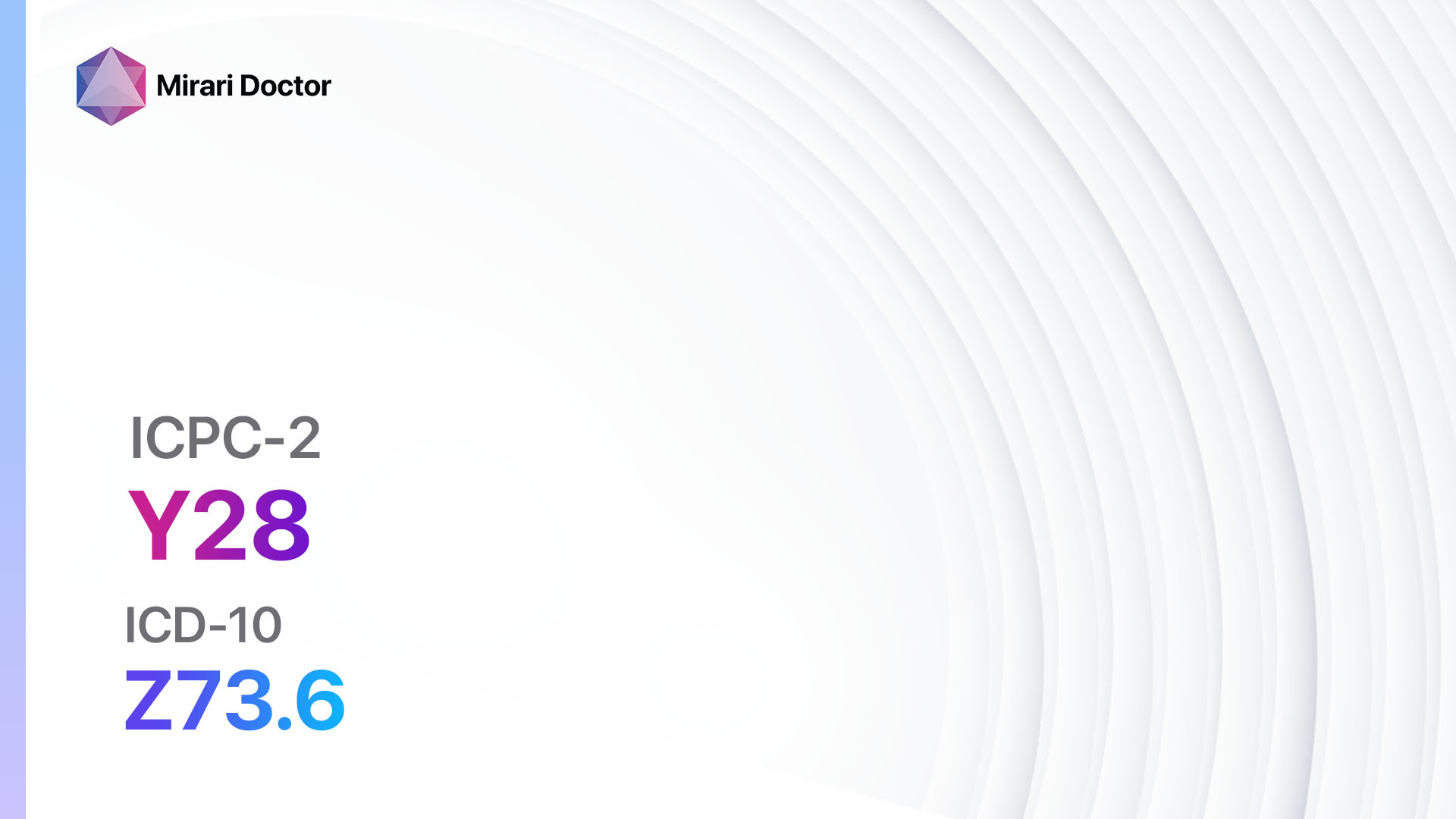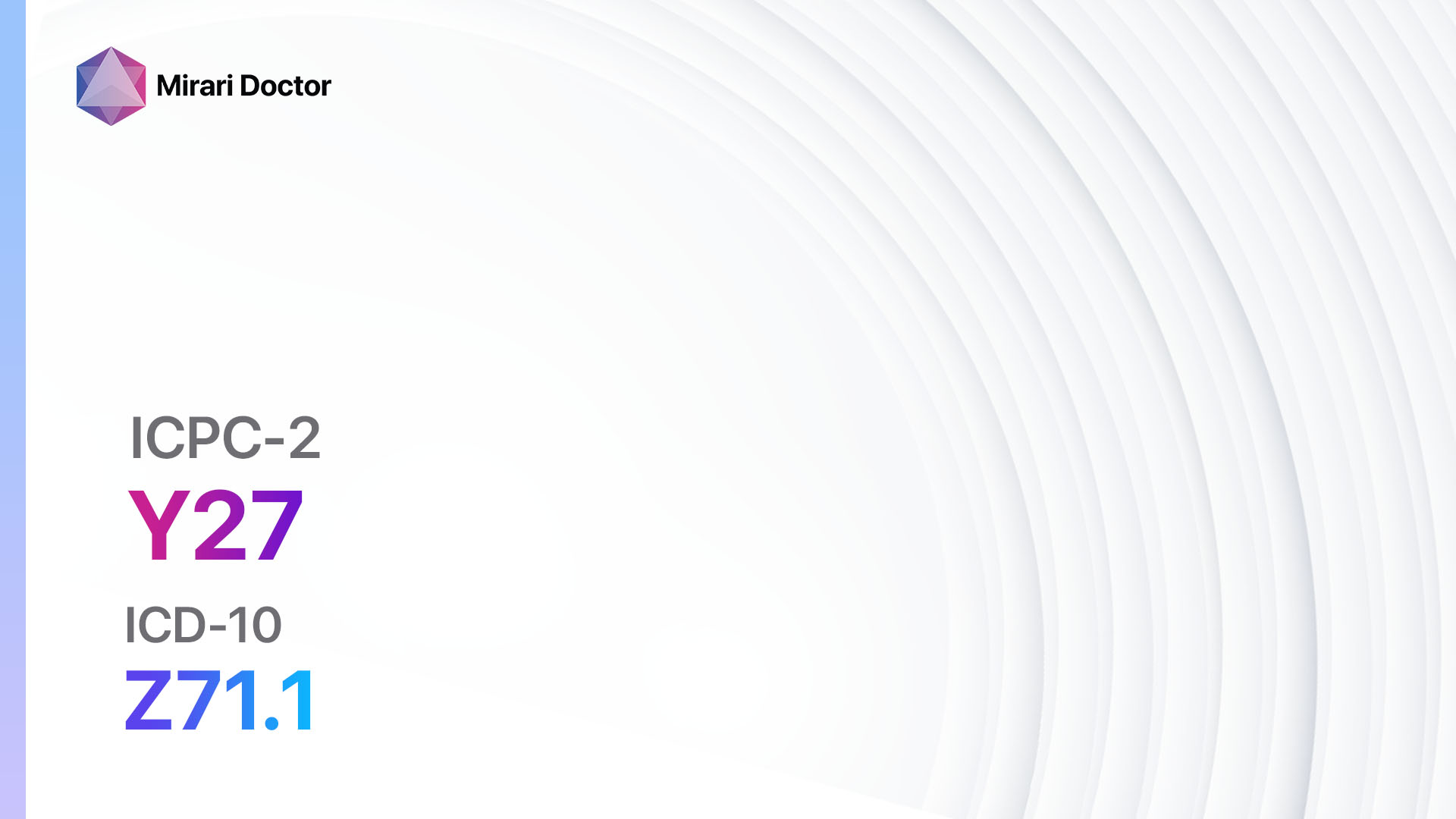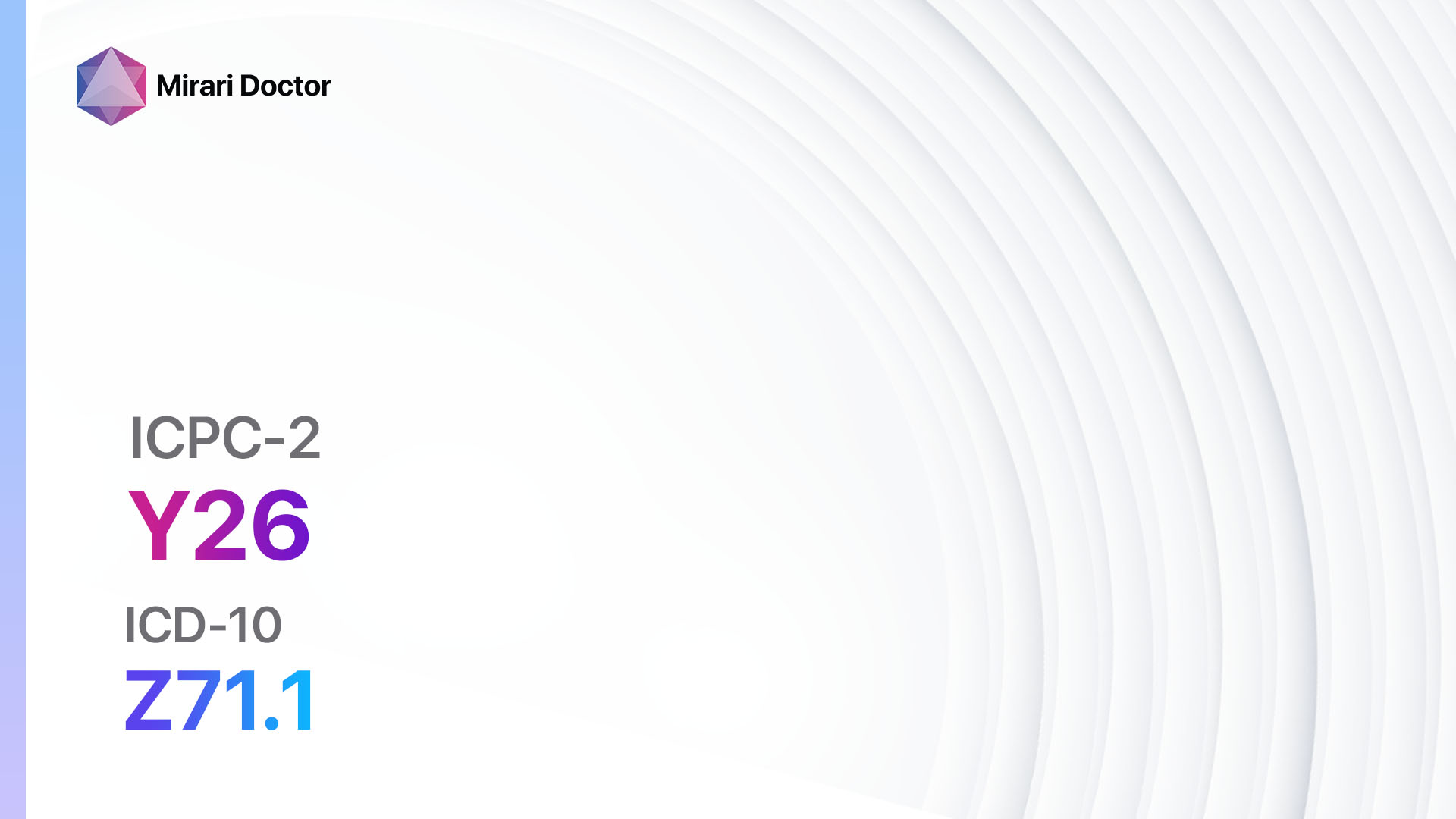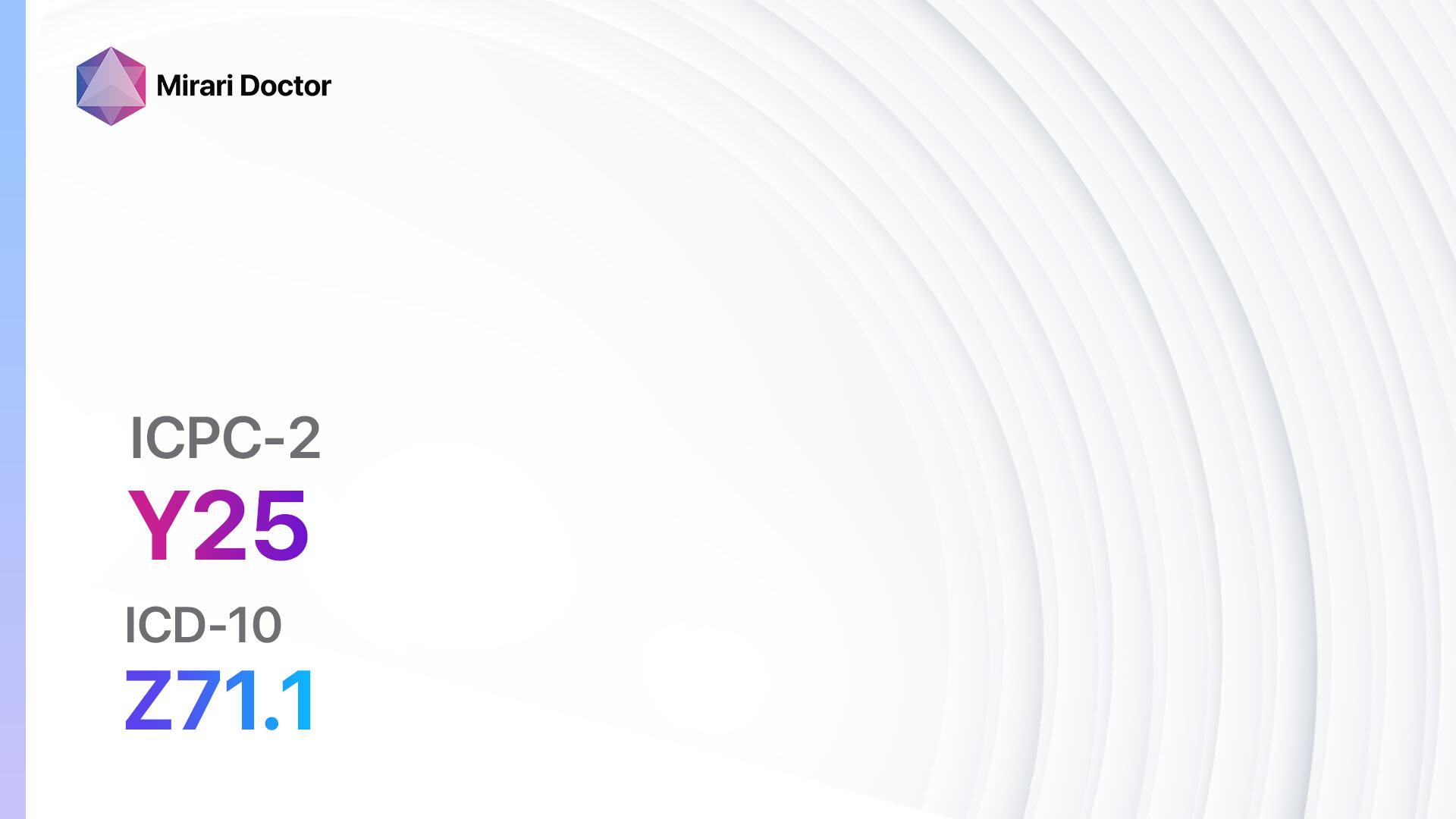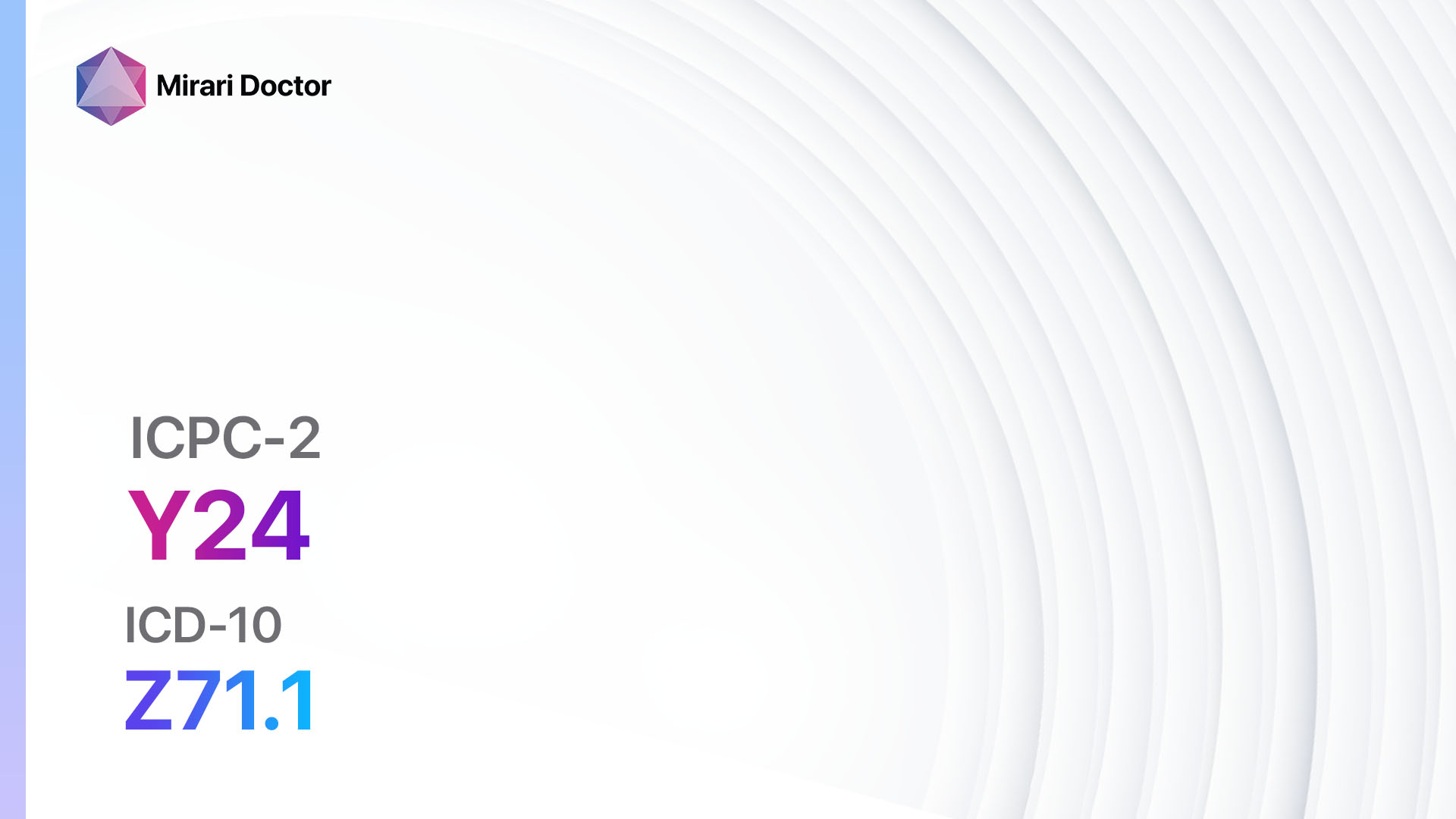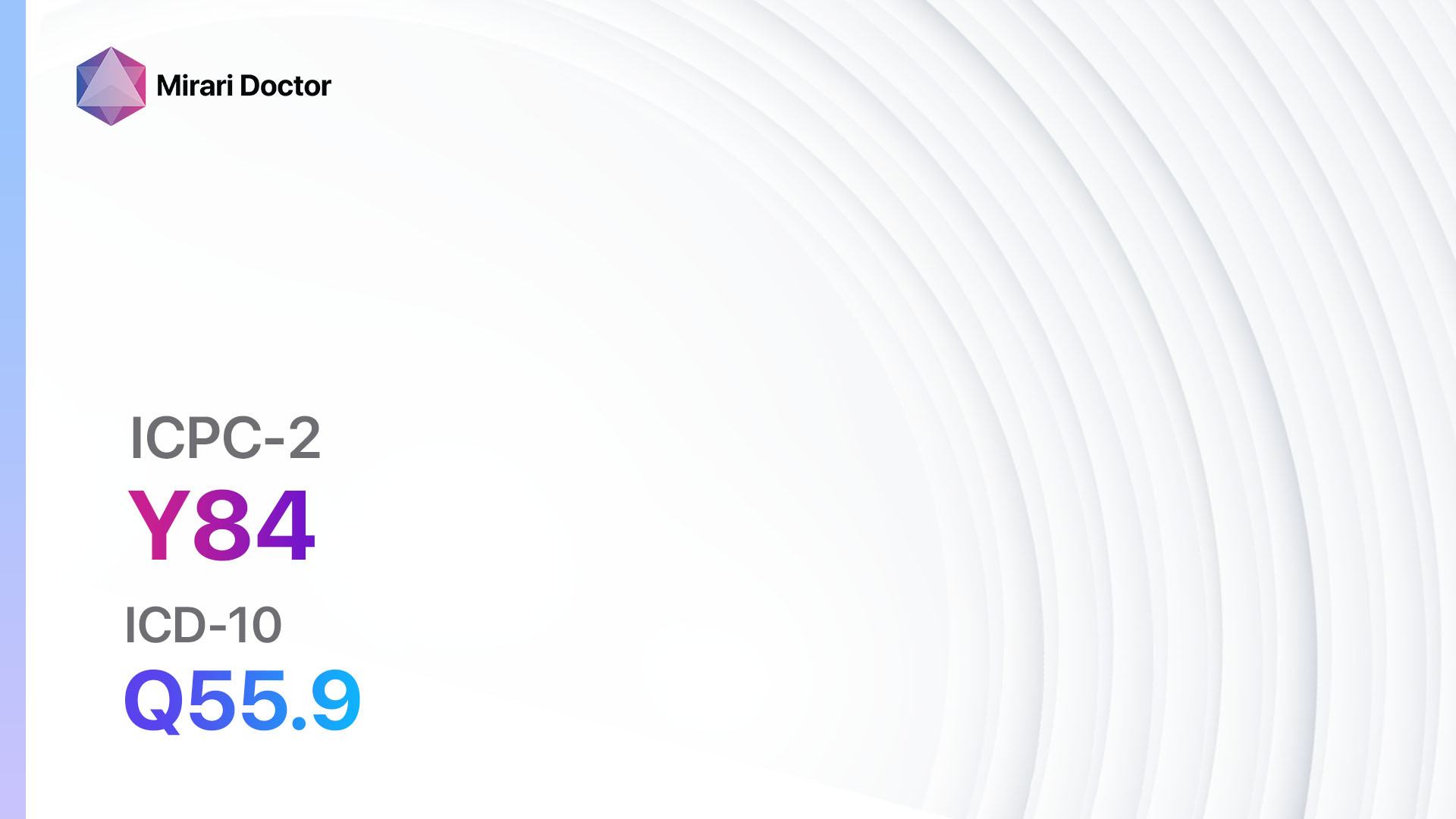
Introduction
Congenital genl anomaly (m) other refers to a congenital anomaly or birth defect that affects the general structure or function of the body. This condition can have significant implications for an individual’s health and development.[1]The aim of this guide is to provide an overview of the symptoms, causes, diagnostic steps, possible interventions, and lifestyle interventions for congenital genl anomaly (m) other.
Codes
- ICPC-2 Code: Y84 Congenital genl anomaly male other[2]
- ICD-10 Code: Q55.9 Congenital malformation of male genital organ, unspecified[3]
Symptoms
- Symptom 1: (Detail about Symptom 1)
- Symptom 2: (Detail about Symptom 2)
Symptoms associated with congenital genl anomaly (m) other can vary greatly depending on the specific anomaly. Some common symptoms may include:
- Abnormalities in the structure or function of organs or body systems
- Developmental delays or disabilities
- Growth abnormalities
- Cognitive or intellectual impairments
- Facial or physical abnormalities
- Heart defects
- Problems with hearing or vision[4]
Causes
- Causes 1: (Detail about Causes 1)
- Causes 2: (Detail about Causes 2)
The causes of congenital genl anomaly (m) other are often multifactorial and can include genetic factors, environmental exposures during pregnancy, and maternal health conditions. Some common causes may include:
- Genetic mutations or abnormalities
- Chromosomal abnormalities
- Maternal infections during pregnancy
- Maternal drug or alcohol use
- Maternal exposure to toxins or radiation
- Maternal health conditions, such as diabetes or high blood pressure[5]
Diagnostic Steps
Medical History
- Gather a comprehensive medical history to identify any risk factors, maternal health conditions, or exposure to environmental factors during pregnancy.
- Assess the presence of any symptoms or developmental delays in the patient.[6]
Physical Examination
- Perform a thorough physical examination to identify any physical abnormalities or signs indicative of congenital genl anomaly (m) other.
- Evaluate the growth and development of the patient.
- Assess the function of specific organs or body systems that may be affected by the anomaly.[7]
Laboratory Tests
- Conduct blood tests to identify any genetic or chromosomal abnormalities.
- Assess specific biomarkers or indicators related to the suspected congenital anomaly.
- Perform specialized assays or tests to evaluate the function of specific organs or body systems affected by the anomaly.[8]
Diagnostic Imaging
- Utilize imaging modalities, such as X-rays, ultrasound, CT scans, or MRIs, to visualize and assess the structure and function of organs or body systems.
- Identify any abnormalities or malformations in the affected areas.
- Assess the severity or extent of the congenital genl anomaly (m) other.[9]
Other Tests
- Consider additional diagnostic tests based on the clinical presentation and suspected specific anomaly.
- Consult with specialists or experts in the field for further evaluation or guidance.
- Conduct genetic testing or counseling to determine the underlying cause or potential recurrence risks.[10]
Follow-up and Patient Education
- Schedule regular follow-up appointments to monitor the patient’s growth, development, and overall health.
- Provide ongoing patient education and support to the patient and their family regarding the congenital genl anomaly (m) other.
- Collaborate with a multidisciplinary team of healthcare professionals to address the specific needs and challenges associated with the anomaly.[1][4]
Possible Interventions
Traditional Interventions
Medications:
Top 5 drugs for Congenital genl anomaly (m) other:
- Medication 1:
- Cost:
- Contraindications:
- Side effects:
- Severe side effects:
- Drug interactions:
- Warning:
- Medication 2:
- Cost:
- Contraindications:
- Side effects:
- Severe side effects:
- Drug interactions:
- Warning:
- Medication 3:
- Cost:
- Contraindications:
- Side effects:
- Severe side effects:
- Drug interactions:
- Warning:
- Medication 4:
- Cost:
- Contraindications:
- Side effects:
- Severe side effects:
- Drug interactions:
- Warning:
- Medication 5:
- Cost:
- Contraindications:
- Side effects:
- Severe side effects:
- Drug interactions:
- Warning:
Alternative Drugs:
- Alternative Drug 1:
- Alternative Drug 2:
- Alternative Drug 3:
- Alternative Drug 4:
- Alternative Drug 5:
Surgical Procedures:
- Surgical procedure 1:
- Cost:
- Contraindications:
- Side effects:
- Severe side effects:
- Drug interactions:
- Warning:
- Surgical procedure 2:
- Cost:
- Contraindications:
- Side effects:
- Severe side effects:
- Drug interactions:
- Warning:
Alternative Interventions
- Alternative intervention 1:
- Effectiveness:
- Cost:
- Alternative intervention 2:
- Effectiveness:
- Cost:
- Alternative intervention 3:
- Effectiveness:
- Cost:
- Alternative intervention 4:
- Effectiveness:
- Cost:
- Alternative intervention 5:
- Effectiveness:
- Cost:
Lifestyle Interventions
- Lifestyle intervention 1:
- Effectiveness:
- Cost:
- Lifestyle intervention 2:
- Effectiveness:
- Cost:
- Lifestyle intervention 3:
- Effectiveness:
- Cost:
- Lifestyle intervention 4:
- Effectiveness:
- Cost:
- Lifestyle intervention 5:
- Effectiveness:
- Cost:
It is important to note that the cost ranges provided are approximate and may vary depending on the location and availability of the interventions.
Mirari Cold Plasma Alternative Intervention
Understanding Mirari Cold Plasma
- Safe and Non-Invasive Treatment: Mirari Cold Plasma is a safe and non-invasive treatment option for various skin conditions. It does not require incisions, minimizing the risk of scarring, bleeding, or tissue damage.
- Efficient Extraction of Foreign Bodies: Mirari Cold Plasma facilitates the removal of foreign bodies from the skin by degrading and dissociating organic matter, allowing easier access and extraction.
- Pain Reduction and Comfort: Mirari Cold Plasma has a local analgesic effect, providing pain relief during the treatment, making it more comfortable for the patient.
- Reduced Risk of Infection: Mirari Cold Plasma has antimicrobial properties, effectively killing bacteria and reducing the risk of infection.
- Accelerated Healing and Minimal Scarring: Mirari Cold Plasma stimulates wound healing and tissue regeneration, reducing healing time and minimizing the formation of scars.
Mirari Cold Plasma Prescription
Video instructions for using Mirari Cold Plasma Device – Y84 Congenital genl anomaly male other (ICD-10:Q55.9)
| Mild | Moderate | Severe |
| Mode setting: 2 (Wound Healing) Location: 0 (Localized) Morning: 15 minutes, Evening: 15 minutes | Mode setting: 2 (Wound Healing) Location: 0 (Localized) Morning: 30 minutes, Lunch: 30 minutes, Evening: 30 minutes | Mode setting: 2 (Wound Healing) Location: 0 (Localized) Morning: 30 minutes, Lunch: 30 minutes, Evening: 30 minutes |
| Mode setting: 7 (Immunotherapy) Location: 1 (Sacrum) Morning: 15 minutes, Evening: 15 minutes | Mode setting: 7 (Immunotherapy) Location: 1 (Sacrum) Morning: 30 minutes, Lunch: 30 minutes, Evening: 30 minutes | Mode setting: 7 (Immunotherapy) Location: 1 (Sacrum) Morning: 30 minutes, Lunch: 30 minutes, Evening: 30 minutes |
| Modesetting: 3 (Antiviral Therapy) Location:0 (Localized) Morning:15 minutes, Evening:15minutes | Modesetting: 3 (Antiviral Therapy) Location:0 (Localized) Morning:30 minutes, Lunch:30 minutes, Evening:30 minutes | Modesetting: 3 (Antiviral Therapy) Location:0 (Localized) Morning:30 minutes, Lunch:30 minutes, Evening:30 minutes |
| Total Morning:45minutesapprox.$7.50USD, Evening:45minutesapprox.$7.50USD | Total Morning:90minutesapprox.$15USD, Lunch:90minutesapprox. $15 USD, Evening:90minutesapprox. $15 USD | Total Morning:90minutesapprox.$15USD, Lunch:90minutesapprox. $15 USD, Evening:90minutesapprox. $15 USD |
| Usualtreatmentfor7-60daysapprox.$105USD–$900USD | Usualtreatmentfor6-8weeksapprox.$1,890USD–$2,520USD | Usualtreatmentfor3-6monthsapprox.$4,050USD–$8,100USD |
 |
|
Use the Mirari Cold Plasma device to treat Congenital genl anomaly (m) other effectively.
WARNING: MIRARI COLD PLASMA IS DESIGNED FOR THE HUMAN BODY WITHOUT ANY ARTIFICIAL OR THIRD PARTY PRODUCTS. USE OF OTHER PRODUCTS IN COMBINATION WITH MIRARI COLD PLASMA MAY CAUSE UNPREDICTABLE EFFECTS, HARM OR INJURY. PLEASE CONSULT A MEDICAL PROFESSIONAL BEFORE COMBINING ANY OTHER PRODUCTS WITH USE OF MIRARI.
Step 1: Cleanse the Skin
- Start by cleaning the affected area of the skin with a gentle cleanser or mild soap and water. Gently pat the area dry with a clean towel.
Step 2: Prepare the Mirari Cold Plasma device
- Ensure that the Mirari Cold Plasma device is fully charged or has fresh batteries as per the manufacturer’s instructions. Make sure the device is clean and in good working condition.
- Switch on the Mirari device using the power button or by following the specific instructions provided with the device.
- Some Mirari devices may have adjustable settings for intensity or treatment duration. Follow the manufacturer’s instructions to select the appropriate settings based on your needs and the recommended guidelines.
Step 3: Apply the Device
- Place the Mirari device in direct contact with the affected area of the skin. Gently glide or hold the device over the skin surface, ensuring even coverage of the area experiencing.
- Slowly move the Mirari device in a circular motion or follow a specific pattern as indicated in the user manual. This helps ensure thorough treatment coverage.
Step 4: Monitor and Assess:
- Keep track of your progress and evaluate the effectiveness of the Mirari device in managing your Congenital genl anomaly (m) other. If you have any concerns or notice any adverse reactions, consult with your health care professional.
Note
This guide is for informational purposes only and should not replace the advice of a medical professional. Always consult with your healthcare provider or a qualified medical professional for personal advice, diagnosis, or treatment. Do not solely rely on the information presented here for decisions about your health. Use of this information is at your own risk. The authors of this guide, nor any associated entities or platforms, are not responsible for any potential adverse effects or outcomes based on the content.
Mirari Cold Plasma System Disclaimer
- Purpose: The Mirari Cold Plasma System is a Class 2 medical device designed for use by trained healthcare professionals. It is registered for use in Thailand and Vietnam. It is not intended for use outside of these locations.
- Informational Use: The content and information provided with the device are for educational and informational purposes only. They are not a substitute for professional medical advice or care.
- Variable Outcomes: While the device is approved for specific uses, individual outcomes can differ. We do not assert or guarantee specific medical outcomes.
- Consultation: Prior to utilizing the device or making decisions based on its content, it is essential to consult with a Certified Mirari Tele-Therapist and your medical healthcare provider regarding specific protocols.
- Liability: By using this device, users are acknowledging and accepting all potential risks. Neither the manufacturer nor the distributor will be held accountable for any adverse reactions, injuries, or damages stemming from its use.
- Geographical Availability: This device has received approval for designated purposes by the Thai and Vietnam FDA. As of now, outside of Thailand and Vietnam, the Mirari Cold Plasma System is not available for purchase or use.
References
- Hutson JM, Balic A, Nation T, Southwell B. Cryptorchidism. Semin Pediatr Surg. 2010;19(3):215-224.
- World Health Organization. International Classification of Primary Care, Second edition (ICPC-2). Geneva: WHO; 2003.
- World Health Organization. International Statistical Classification of Diseases and Related Health Problems, 10th Revision (ICD-10). Geneva: WHO; 2019.
- Virtanen HE, Toppari J. Epidemiology and pathogenesis of cryptorchidism. Hum Reprod Update. 2008;14(1):49-58.
- Klonisch T, Fowler PA, Hombach-Klonisch S. Molecular and genetic regulation of testis descent and external genitalia development. Dev Biol. 2004;270(1):1-18.
- Kolon TF, Herndon CD, Baker LA, et al. Evaluation and treatment of cryptorchidism: AUA guideline. J Urol. 2014;192(2):337-345.
- Tasian GE, Copp HL. Diagnostic performance of ultrasound in nonpalpable cryptorchidism: a systematic review and meta-analysis. Pediatrics. 2011;127(1):119-128.
- Ferlin A, Zuccarello D, Zuccarello B, et al. Genetic alterations associated with cryptorchidism. JAMA. 2008;300(19):2271-2276.
- Kantarci M, Doganay S, Yalcin A, Aksoy Y, Yilmaz-Cankaya B, Salman B. Diagnostic performance of diffusion-weighted MRI in the detection of nonpalpable undescended testes: comparison with conventional MRI and surgical findings. AJR Am J Roentgenol. 2010;195(4):W268-W273.
- Cortes D, Thorup JM, Beck BL. Quantitative histology of germ cells in the undescended testes of human fetuses, neonates and infants. J Urol. 1995;154(3):1188-1192.
Related articles
Made in USA


